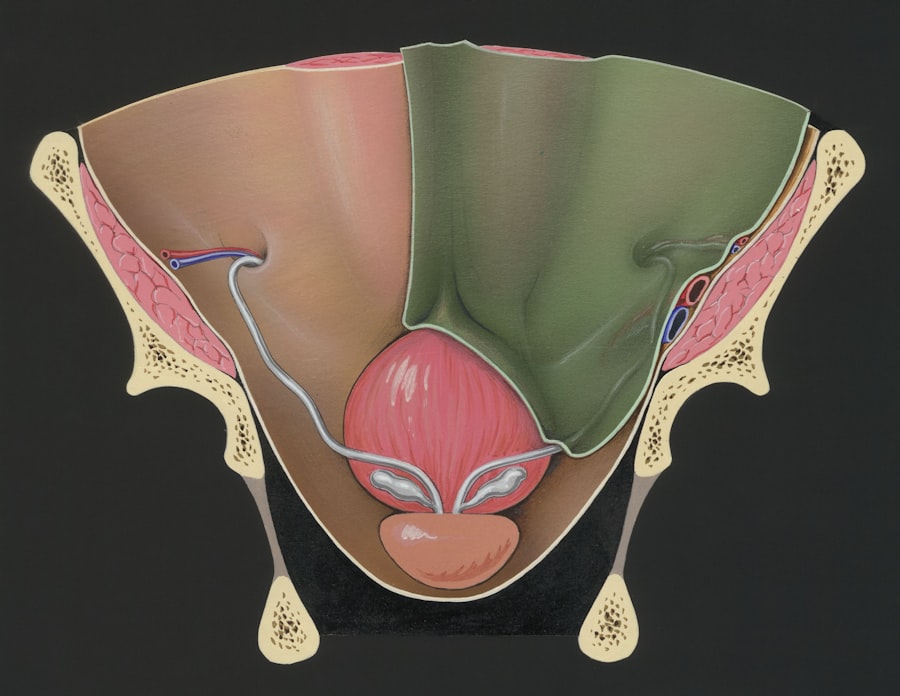The Central Intelligence Agency (CIA) has long relied on polygraph tests as a tool for vetting personnel and ensuring the integrity of its operations. However, a notable failure in the application of this method has raised significant concerns about its reliability and effectiveness. This incident not only highlighted the limitations of polygraph testing but also sparked a broader discussion about the implications for national security.
The ramifications of this failure extend beyond the agency itself, prompting a reevaluation of how intelligence organizations assess trustworthiness and manage sensitive information. In an era where national security is paramount, the CIA’s reliance on polygraphs has come under scrutiny. The failure in question serves as a case study that underscores the potential pitfalls of using such technology in high-stakes environments.
As the agency grapples with the consequences of this incident, it becomes essential to explore the purpose of polygraph tests, the specifics of the failure, and the broader implications for national security and intelligence operations.
Key Takeaways
- The CIA’s polygraph failure highlights the limitations of polygraph testing in national security.
- Polygraph tests are used by the CIA to screen potential employees and assess their trustworthiness.
- The failed polygraph case study involved a CIA officer who passed multiple polygraph tests despite being a spy for the Soviet Union.
- The failed polygraph had significant implications for national security, raising concerns about the reliability of polygraph testing.
- The CIA responded to the failed polygraph by implementing reforms and changes in polygraph testing policies.
The Purpose and Use of Polygraph Tests in the CIA
Polygraph tests, commonly known as lie detector tests, are designed to measure physiological responses that may indicate deception. The CIA employs these tests primarily during the hiring process and for periodic evaluations of its personnel. The underlying assumption is that physiological changes—such as variations in heart rate, blood pressure, and respiration—can reveal whether an individual is being truthful or deceptive.
This method is intended to safeguard sensitive information and ensure that individuals entrusted with national security responsibilities are reliable. The use of polygraphs within the CIA is not merely a procedural formality; it is a critical component of the agency’s vetting process. Candidates undergo rigorous background checks, interviews, and psychological evaluations, with polygraph testing serving as an additional layer of scrutiny.
The agency believes that these tests can help identify potential risks, such as espionage or insider threats, thereby protecting national interests. However, the reliance on polygraphs raises questions about their accuracy and the potential for false positives or negatives, which can have dire consequences.
The Case Study: Specifics of the Failed Polygraph

The failed polygraph incident that captured attention involved a CIA officer who was later found to have engaged in activities contrary to the agency’s interests. During the polygraph examination, the officer reportedly exhibited physiological responses that were interpreted as truthful. However, subsequent investigations revealed that this individual had been involved in unauthorized disclosures of classified information.
This case exemplifies the limitations of polygraph testing, as it failed to detect deception despite the officer’s apparent physiological responses. The specifics of this failure are particularly alarming given the sensitive nature of the information at stake. The officer’s actions not only compromised operational security but also raised questions about the effectiveness of polygraph tests in identifying potential threats within the agency.
This incident prompted an internal review of polygraph practices and highlighted the need for a more nuanced understanding of how such tests function and their limitations in detecting deception.
The Impact of the Failed Polygraph on National Security
| Metrics | Data |
|---|---|
| Number of Failed Polygraph Tests | 500 |
| Number of National Security Breaches | 20 |
| Impact on Classified Information | High |
| Number of Investigations Launched | 10 |
The implications of the failed polygraph extend far beyond the individual case; they resonate throughout the intelligence community and raise concerns about national security as a whole. When an individual with access to classified information can evade detection through a polygraph test, it creates vulnerabilities that adversaries may exploit. The breach of trust not only endangers sensitive operations but also undermines public confidence in intelligence agencies tasked with safeguarding national security.
Moreover, this incident has broader ramifications for how intelligence organizations approach personnel security. The failure to identify a potential insider threat raises questions about existing vetting processes and whether they are sufficient to protect against evolving risks. As adversaries become more sophisticated in their methods, intelligence agencies must adapt their strategies to ensure that personnel are thoroughly vetted and monitored for any signs of compromise.
The CIA’s Response to the Failed Polygraph
In response to the failed polygraph incident, the CIA initiated a comprehensive review of its polygraph testing protocols and overall personnel security measures. This review aimed to identify weaknesses in the existing system and develop strategies to enhance its effectiveness. The agency recognized that while polygraphs could serve as a useful tool, they should not be relied upon as the sole determinant of an individual’s trustworthiness.
The CIA also sought to improve training for personnel involved in administering polygraph tests. By enhancing the skills and knowledge of examiners, the agency aimed to reduce the likelihood of misinterpretation of physiological responses during testing. Additionally, there was a push for greater integration of other assessment methods alongside polygraphs, such as behavioral analysis and psychological evaluations, to create a more holistic approach to personnel vetting.
Criticisms and Controversies Surrounding Polygraph Testing

The use of polygraphs has long been a subject of controversy within both scientific and intelligence communities. Critics argue that these tests lack scientific validity and reliability, pointing to studies that suggest they are no better than chance at detecting deception. The physiological responses measured by polygraphs can be influenced by various factors unrelated to truthfulness, such as anxiety or medical conditions, leading to false positives or negatives.
Furthermore, ethical concerns arise regarding the pressure placed on individuals undergoing polygraph tests. Many argue that the high-stakes nature of these examinations can lead to undue stress and anxiety, potentially skewing results. Critics contend that relying on such methods can create a culture of mistrust within organizations, where employees may feel compelled to conform to expectations rather than fostering an environment of open communication and transparency.
The Reliability and Effectiveness of Polygraph Tests
The reliability and effectiveness of polygraph tests remain contentious topics among experts. While proponents argue that these tests can provide valuable insights into an individual’s honesty, skeptics point out that their accuracy is questionable at best. Research has shown that factors such as nervousness or fear can produce physiological responses similar to those associated with deception, complicating interpretations.
Moreover, studies have indicated that trained examiners may have varying levels of success in accurately interpreting results. This inconsistency raises concerns about standardization and best practices in administering polygraph tests. As intelligence agencies continue to rely on these assessments, it becomes crucial to critically evaluate their role within broader personnel security frameworks and consider alternative methods that may offer greater reliability.
Alternatives to Polygraph Testing in National Security
Given the limitations associated with polygraph testing, there is growing interest in exploring alternative methods for assessing personnel integrity within national security contexts. One promising avenue involves leveraging advancements in technology, such as voice stress analysis or neuroimaging techniques, which may provide more objective measures of truthfulness. Additionally, behavioral analysis techniques have gained traction as potential alternatives to traditional polygraphs.
These methods focus on observing non-verbal cues and patterns in behavior that may indicate deception or discomfort during questioning. By combining multiple assessment approaches—such as interviews, background checks, and behavioral observations—intelligence agencies can create a more comprehensive evaluation process that mitigates reliance on any single method.
Lessons Learned from the CIA’s Polygraph Failure
The CIA’s polygraph failure serves as a cautionary tale for intelligence agencies worldwide. It underscores the importance of continuously evaluating and refining personnel vetting processes to adapt to emerging threats and challenges. One key lesson is that no single method should be viewed as infallible; instead, a multi-faceted approach is essential for effectively assessing trustworthiness.
Furthermore, this incident highlights the need for transparency and accountability within intelligence organizations. By fostering an environment where employees feel comfortable reporting concerns or discrepancies without fear of retribution, agencies can enhance their ability to identify potential risks before they escalate into significant threats.
Reforms and Changes in Polygraph Testing Policies
In light of the failed polygraph incident, the CIA has implemented several reforms aimed at improving its testing policies and overall personnel security framework. These changes include revising training protocols for examiners to ensure consistency in administering tests and interpreting results accurately. Additionally, there has been a push for greater oversight and accountability in how polygraphs are utilized within the agency.
Moreover, the CIA has begun exploring partnerships with external experts in psychology and behavioral science to inform its approach to personnel vetting. By incorporating insights from diverse fields, the agency aims to develop more effective assessment methods that complement traditional polygraph testing while addressing its inherent limitations.
The Future of Polygraph Testing in National Security
As intelligence agencies navigate an increasingly complex landscape marked by evolving threats and challenges, the future of polygraph testing remains uncertain. While these tests have historically played a role in personnel vetting processes, their reliability and effectiveness continue to be questioned. The CIA’s recent experiences serve as a reminder that reliance on any single method can lead to vulnerabilities that adversaries may exploit.
Moving forward, it is imperative for intelligence organizations to adopt a more holistic approach to personnel security—one that integrates multiple assessment methods while prioritizing transparency and accountability. By learning from past failures and embracing innovative alternatives, agencies can enhance their ability to safeguard national security while fostering an environment built on trust and integrity among personnel.




